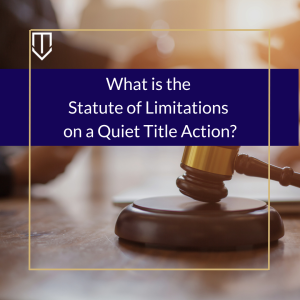 The Legislature has not established a specific statute of limitations for actions to quiet title. (Salazar v. Thomas (2015) 236 Cal.App.4th 467, 476.) Instead, the statute of limitations is based on the underlying theory of relief for the action. (Id.) For example, if the underlying theory is relief for trespass or injury to real property, then the applicable statute of limitations would be three years. (Code of Civil Procedure § 338.)
The Legislature has not established a specific statute of limitations for actions to quiet title. (Salazar v. Thomas (2015) 236 Cal.App.4th 467, 476.) Instead, the statute of limitations is based on the underlying theory of relief for the action. (Id.) For example, if the underlying theory is relief for trespass or injury to real property, then the applicable statute of limitations would be three years. (Code of Civil Procedure § 338.)
Generally, for most legal claims, there is a time period called the statute of limitations where a plaintiff could sue under that claim. The statute of limitations provides for a certain amount of time, which varies depending on the claim, during which the party must bring forth the lawsuit. If a party sues after the statute of limitations has passed, then the legal claim is barred, and the lawsuit cannot proceed.
Statute of limitations are an essential aspect of litigation that parties must know. One point of contention for any statute of limitations is when the clock starts running for the statute of limitations. This can be difficult to figure out, especially for real property related claims.
 California Partition Law Blog
California Partition Law Blog

